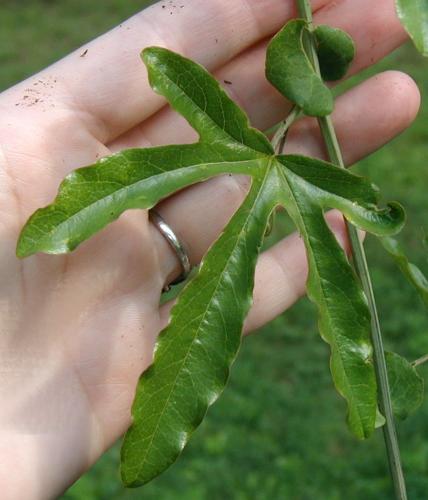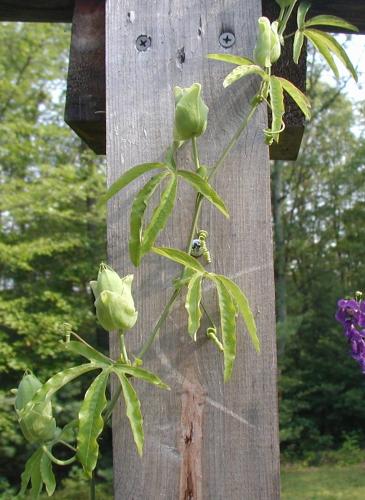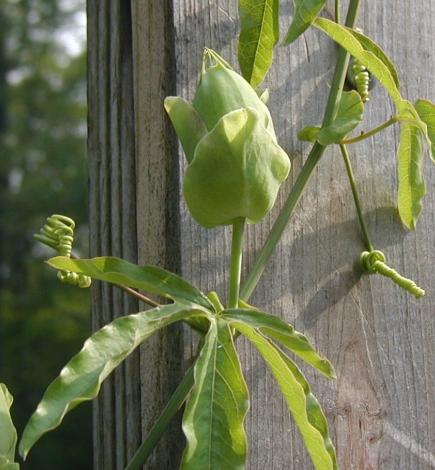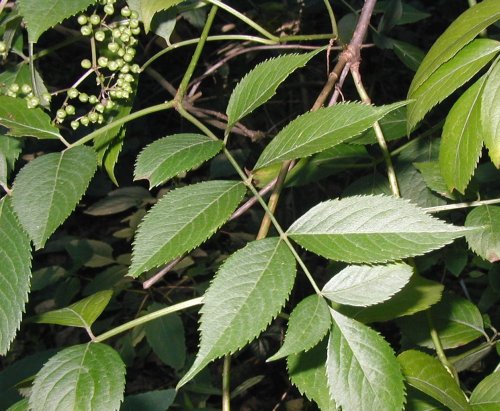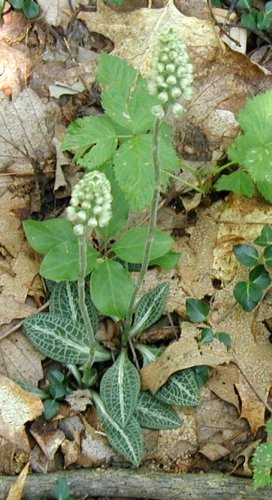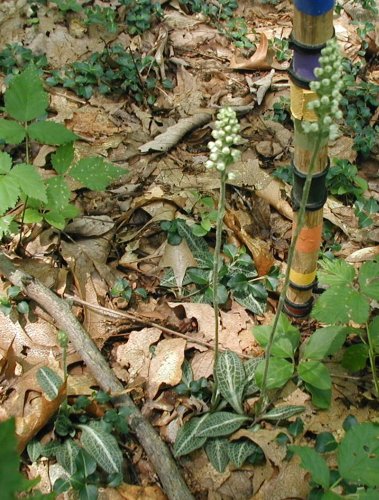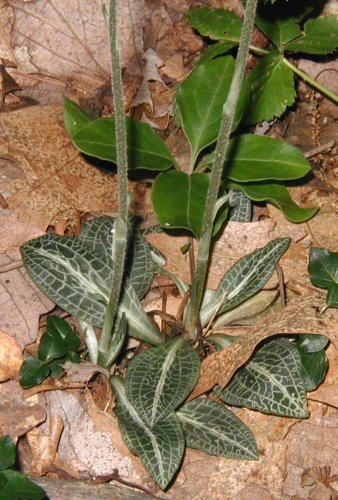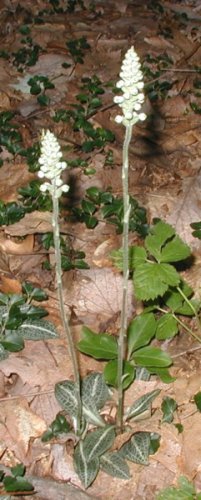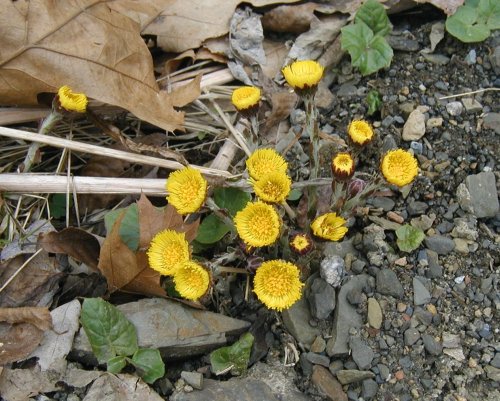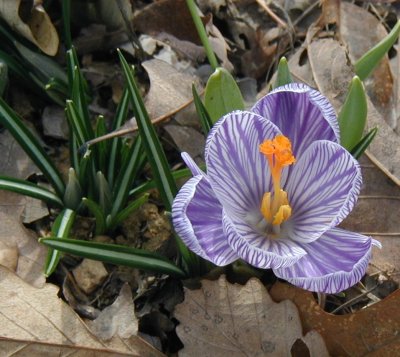We’ve had some really hot weather lately, and with the nightly downpours, that was enough of an excuse that I’d stopped mowing the lawn for about a month. Yes, the grassy areas did get deep and I know I’ll regret it when I have to twice-mow that long grass to get it back into shape. But there’s a silver lining to that cloud – I’ve met a few more meadow plants!
In the front yard we have Indian-tobacco, a type of Lobelia. I remember seeing it last year there, but didn’t take any pictures then.
Indian-tobacco, Lobelia inflata, is the most common lobelia and it can be found along roads, at the edge of woods, and in meadows, like where the front yard meets the woods in our case.
Lobelias are characterized by their flower shape, having five petals joined at the base so they form a tube, or corolla. Two upper petals can be thought of as ‘ears’ and the three lower petals as ‘lips’. Different Lobelia species vary in their overall flower and leaf shapes, as well as the placement of the blossoms.
Flowering from July to October, Indian-tobacco has its flowers in the leaf axils.
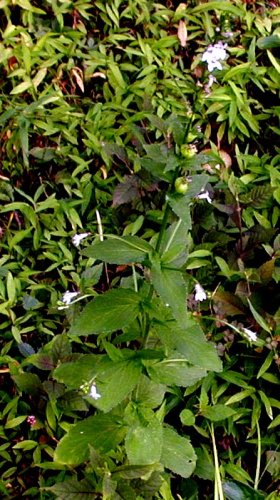
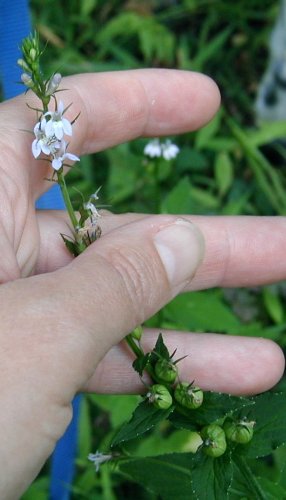
After flowering the blossoms swell at the base into pea-sized seedpods with the remnants of the flower sepals at the top of the round pods.
Alternating leaves are toothed, oval shaped, and larger than the leaves of most Lobelia, especially nearer the ground.
Looking down on this common plant, you can see that blooms further down the stem are on longer stems that hang over the leaves. Further up the top of the stem the blooms are nearer the main stem, and at the top they’re right on the stem.
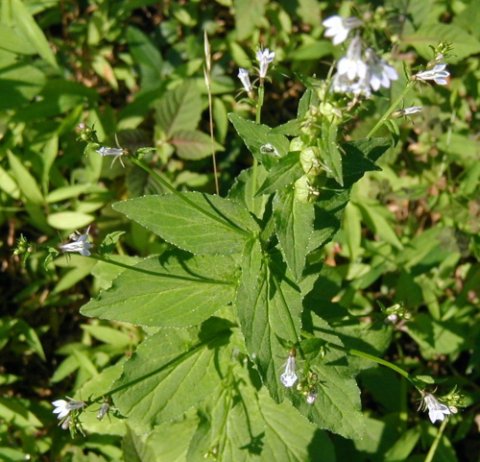
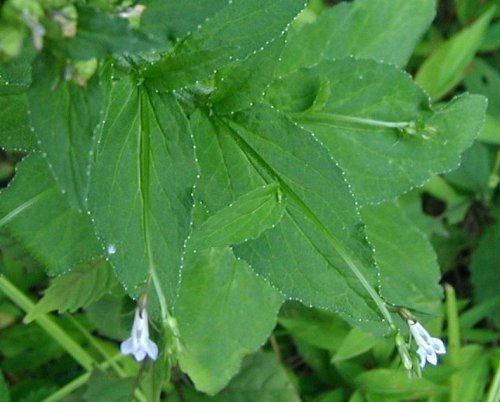
You can see that flowers are blooming at the top and sides of this Indian tobacco.
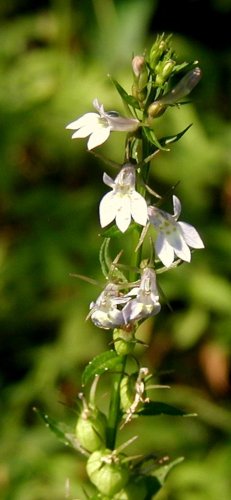
The bright sun blanched out the pale blue color of the flower petals, but you can see the progression of budding flowers to opened blooms to swollen seedpods.
